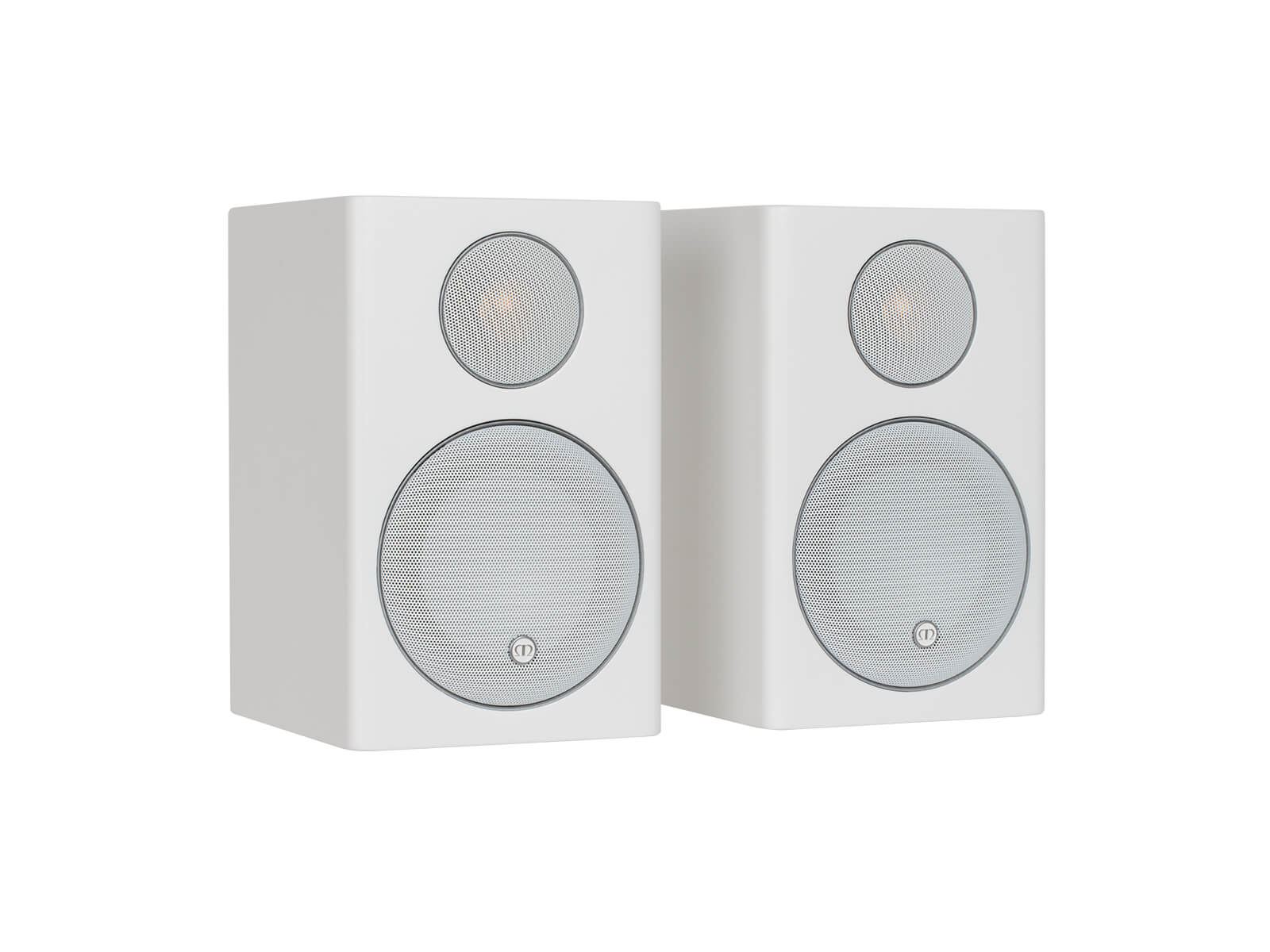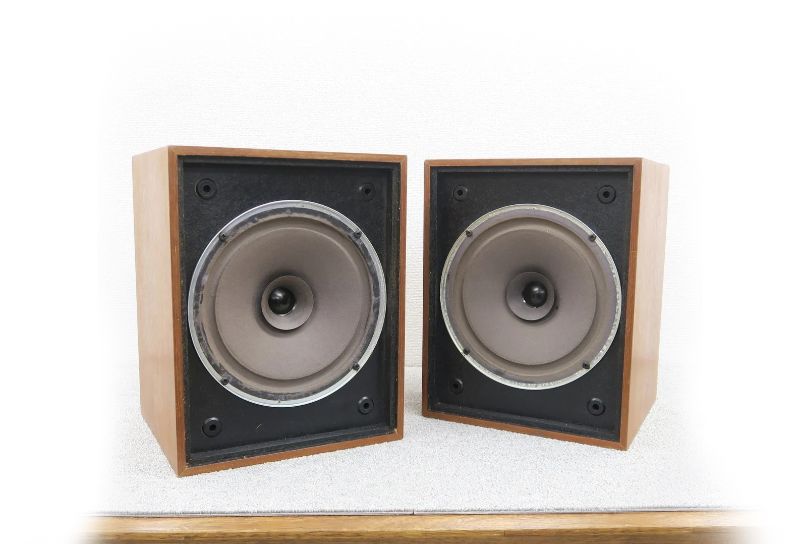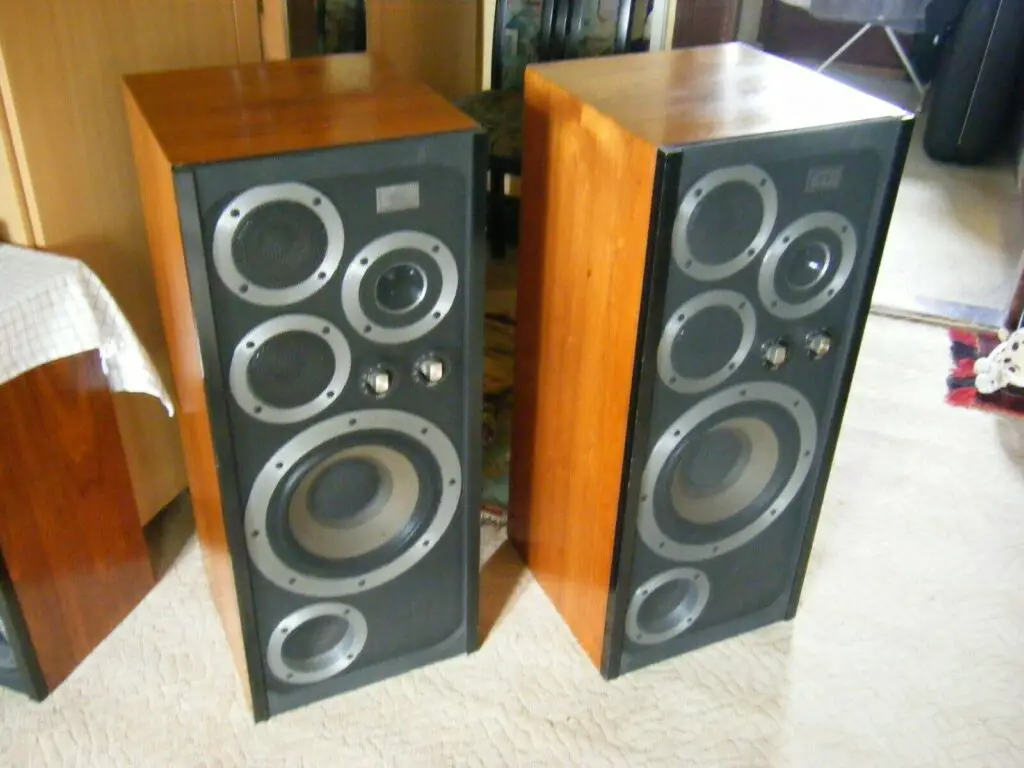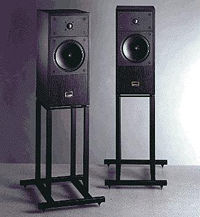Monitor Audio’s Radius 90, which retails for £350, is one of my favorite super-small speakers. It’s only 198x125x140mm in size, weighs 2.1kg, and has only 1.5 liters of usable space within. It was available in real wood veneer, piano lacquer white or black at the time of its launch — silver was no longer an option, as it had been in the previous two editions. This speaker’s finish and manufacturing quality are exceptional; it’s difficult to find any flaws. A single through-bolt secures the mid/bass driver to the cabinet’s back for further rigidity. It makes a dull ‘thunk’ when you rap it with your knuckles, demonstrating how little room there is in the design for undesired resonances. This means we’re listening to the box less than we would with a similar-priced floorstander (or larger stand-mount); there’s less overhang, time-smearing, and other evil noises.
The drive units themselves are remarkable, and it is here that the new Radius 90 sets itself apart from the previous model. The new 25mm Gold coated aluminium dome C-CAM tweeter is stated to have a frequency range of 35kHz, while the simple second-order crossover employs high-grade metalized polypropylene capacitors and transitions to the bass unit at 2.8kHz. The high-grade air core and laminated iron core inductors, according to Monitor Audio, provide the lowest possible distortion and insertion losses. Pureflow 2.5mm square section OFC wiring from the manufacturer is used. The new 100mm mid/bass driver includes a cast aluminium frame for robustness and rigidity, as well as a metal cone, which is a significant improvement over the previous Radius 90HD, which used glass-loaded engineered polymer. Because the quoted sensitivity is only 83dB, you’ll need a powerful solid-state amplifier that puts out at least 40W RMS per channel at practical volumes.
The 380 and 390 active subwoofers are available in the new Radius line, but according to designer Dean Hartley, “we aimed to ensure the R90 could be utilized as a full range speaker, therefore we set out to produce a balanced, flat frequency response.” As a result, the speakers may be mounted on stands, and Monitor Audio has created an attractive bespoke pair that are pre-wired between terminals at the speaker mounting and terminals fitted to the stand plinth at floor level; the top terminals neatly auto-connect with the R90 speaker terminals. If the bass is lacking, the speakers and supports can be slammed into the back wall for added boundary reinforcement.
Alternatively, this is one of the few loudspeakers that can be installed rigidly on a bookshelf. If you do this, make sure it’s a big one, preferably near ear level, and always Blu-tac the speakers to the shelf. Finally, there’s a single-point wall mount that can be used with either the Monitor Audio speaker mount or any normal wall bracket. With just a little toe-in and a good source and amp that aren’t scared to make bass, you might be surprised by how deep and powerful the Radius 90 can sound. The firm claims a frequency response of 80Hz to 35kHz (-6dB); my ears tell me there’s not much usable bass below 120Hz, but that’s not as bad as it sounds…
When people who are new with the Radius 90 go into a room with two of them playing, they usually say two things: first, how small they are, and then, “but where are the primary speakers?” This demonstrates how they can produce a sound that is virtually TARDIS-like, defying their actual dimensions. They can deceive the ear, making the listener doubt the evidence their eyes are providing. One reason for this is the bass’s solidity, speed, and articulation; with a little rear wall reinforcement, it emerges from its shell and reveals itself to be incredibly lithe and expressive. On Chic’s My Forbidden Lover, for example, you’ll marvel at Bernard Edwards’ breathtaking bass guitar work modulating up and down. It’s so rapid and enjoyable that you forget it lacks the heft of, say, the similarly priced but much larger Q Acoustics 2050i floorstander from the same period. Even better, the long-throw mid/bass driver takes a lot of abuse before compressing; you wouldn’t use it in place of a PA stack during a live show, but in a medium-sized listening room, it goes louder and cleaner than you might expect.
Moving up the scale, the new ’90 has a little quicker, more searching midband than the previous model, making vocals even more urgent, stereo imaging even more explicit, and depth perspective even greater. Kate Bush’s Snowflake is a severe test of a speaker when played at high volume, but the little Monitor Audio passed with flying colors, displaying a richness and warmth that you wouldn’t expect from such a modestly priced – and indeed small – box. The two drive units seamlessly transition between one another, giving female vocals a nice, natural feel; I’d argue they’re better integrated than before, as the former Radius 90HD’s low frequency driver had a little softer sound than the bright, spry tweeter. The music has a nice, whole-of-piece feel to it, and it’s not only tonally clean and smooth, but it’s also extremely good at maintaining phase – you don’t get the impression that you’re listening to two drive units doing their own thing, as you could with some similarly priced designs. As a result, the new Radius projects wonderfully, shooting vocals and instruments with laser-like precision out of its box.
Because of its pace, this small speaker is incredibly effective at throwing you off track. You’re always aware that it has limitations in terms of bass reproduction, but you don’t linger on it. What You Do to Me by Teenage Fanclub is a fantastic slice of singalong indie rock that has a wonderful physicality thanks to the powerful bass guitar and percussion pounding. When played through the new ’90, however, the beauty of the vocals and the nasty, grungey guitar playing, as well as the lovely, glittering hi-hat work, hook you in. This speaker deceives by making the music riotously excellent fun, emotionally affecting, and even forceful — but not moving nearly as much air as a larger, looser speaker. The outcome is a little different but no less enjoyable experience than a wider range design — in fact, the rhythmic acuity and ability to identify dynamic contrasts in the music is superior than almost all price rivals.
It’s only while listening to classical music that you realize these aren’t quite the universal cure-all you’d hoped for. Anyone who has attended a live classical concert has felt the visceral presence of a full orchestra; you know, those strongly bowed cellos vibrating you back, and so on. The Radius 90, on the other hand, is just incapable of doing so. What it can – and did – with my favorite Karajan recording of Beethoven’s Pastoral Symphony was transmit the exquisite texture of the massed strings – if not the body – while also giving the recorded acoustic a gloriously brilliant and airy window. The tweeter is outstanding; it produces a delightfully open and finely etched sound that is spacious and extended yet smooth and sensitive. The new mid/bass unit is more detailed and quicker than before, which enhances the experience even more. The ultimate result is a little loudspeaker with a lot of audio power!
The new Radius 90 from Monitor Audio is a one-of-a-kind product on the market. Its miniscule dimensions may be a touch extreme for some preferences, but it is a step down in size from speakers that are usually thought to be the smallest, such as the KEF C1s of the world. Many people will desire something that is physically larger and less confined on the lower levels. Those with smaller listening spaces, which larger boxes may overshadow, and/or those having neighbors or family members to keep sweet, would like this compact box. Yes, the bottom octave – or two – of the performance is lost, but it more than makes up for it with a fantastically quick, engaging, and incisive sound throughout the rest of the piece, which is also clever and seamless. This is a wonderful speaker to try if you have limited space or don’t want your hi-fi to take over your room.







